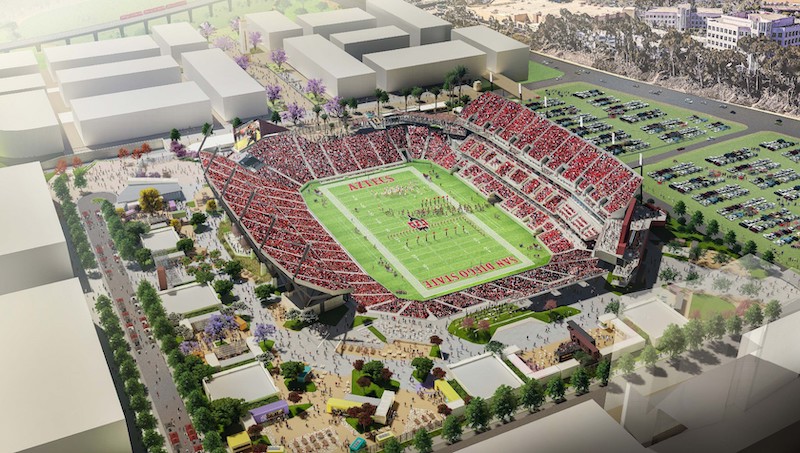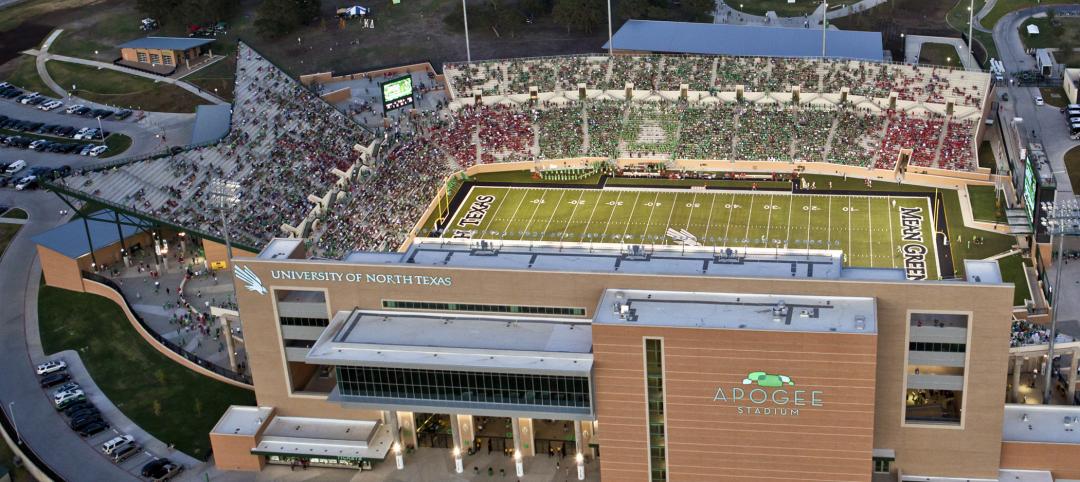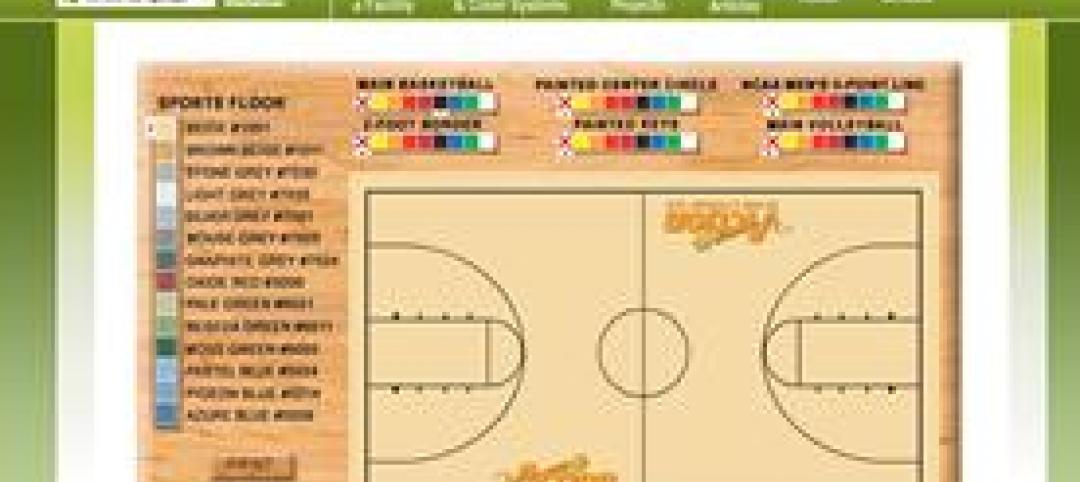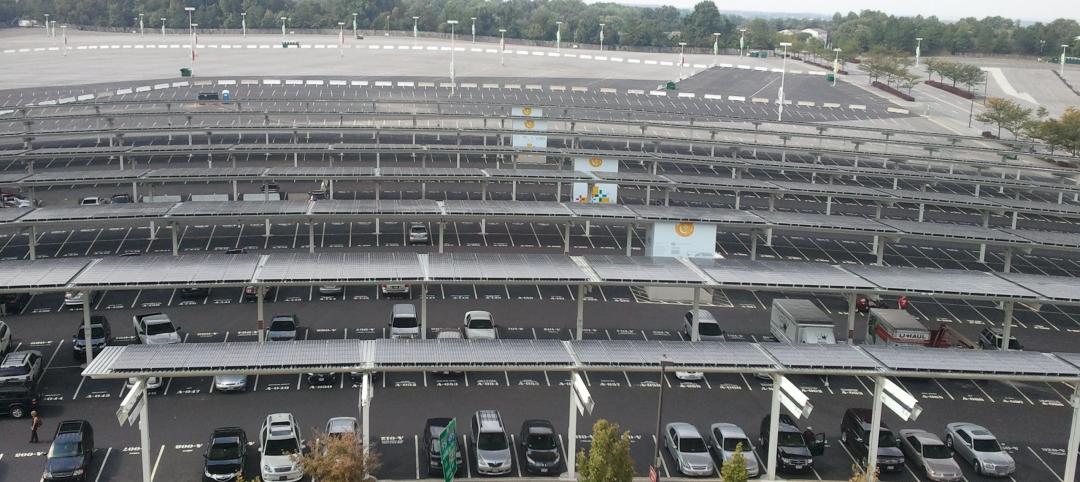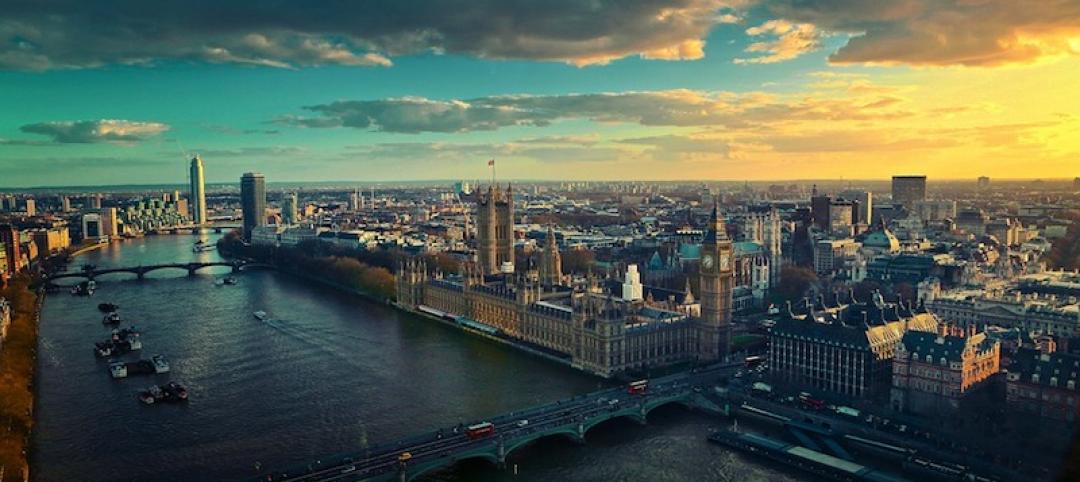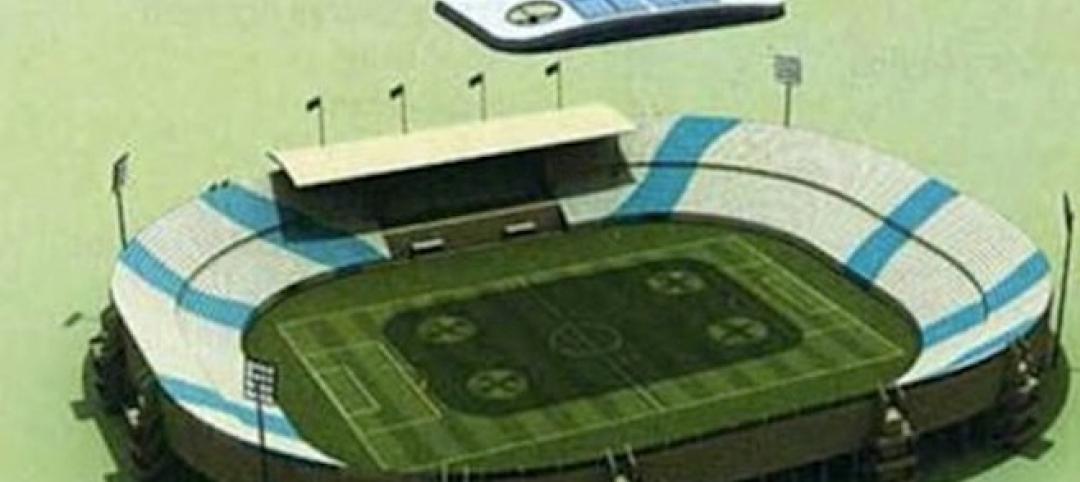This week, a building team that includes Clark Construction Group topped out the 35,000-seat-capacity Aztec Stadium at San Diego State University.
The structural steel operations for the $310 million stadium were completed 11 months after construction commenced. Once the stadium opens in September 2022, it is expected to host more than 300 events annually, including collegiate and professional football and soccer games, concerts, and cultural events.
The facility, which project architect Gensler Sports designed to meet LEED Gold certification, is the first phase of SDSU Mission Valley, a mixed-used, medium-density campus innovation district that will include transit, 95,000 sf of retail, 4,000 residences and 400 hotel rooms, and more than 80 acres of parks and recreation space. This district is projected to have a $3.1 billion economic impact on San Diego, create 17,000 jobs, and increase the university’s enrollment by 15,000.
What had been Qualcomm Stadium was demolished—after the San Diego Chargers football team relocated to Los Angeles—to make way for SDSU Mission Valley. In June 2020, the university agreed to pay the city $88 million to acquire 135 acres of Mission Valley for this district.
CREATED 6,500 CONSTRUCTION JOBS
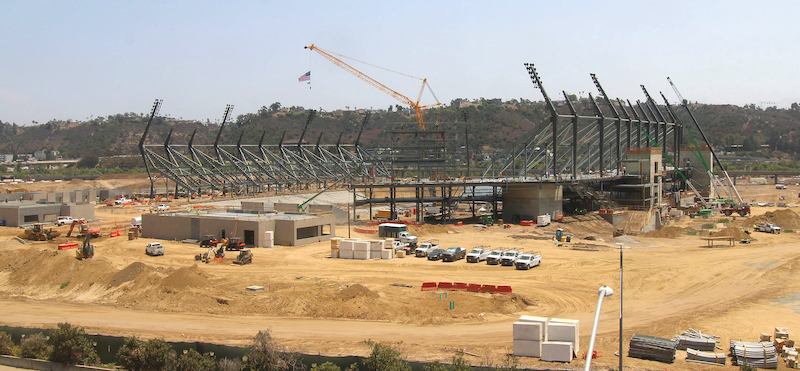
The Aztec Stadium is supported by 2,500 steel beams. Image: Clark Construction Group.
Some 30,000 cubic yards of concrete were poured for Aztec Stadium, which is supported by 2,500 steel beams. On average, 300 craft workers representing 15 different trade partners were on-site daily. The construction of the stadium provided nearly 6,500 construction jobs in total. In aggregate, local firms—including 35 San Diego-based businesses—were awarded $250 million in construction contracts.
Signature design elements that create connectivity to the field include the venue’s concourse level “neighborhoods,” designed to reflect the city’s diverse communities, and unique standing-room-only “piers” that jut out over stadium seating and conjure a coastal vibe.
Related Stories
| Oct 20, 2011
UNT receives nation’s first LEED Platinum designation for collegiate stadium
Apogee Stadium will achieve another first in December with the completion of three wind turbines that will feed the electrical grid that powers the stadium.
| Sep 30, 2011
Design your own floor program
Program allows users to choose from a variety of flooring and line accent colors to create unique floor designs to complement any athletic facility.
| Sep 16, 2011
Largest solar installation completed at Redskins' football stadium
On game days, solar power can provide up to 20% of FedExField’s power.
| Sep 12, 2011
First phase of plan to revitalize Florida's Hialeah Park announced
This is the first project of a master plan developed to revive the historic racetrack.
| May 25, 2011
Olympic site spurs green building movement in UK
London's environmentally friendly 2012 Olympic venues are fuelling a green building movement in Britain.
| Apr 11, 2011
Wind turbines to generate power for new UNT football stadium
The University of North Texas has received a $2 million grant from the State Energy Conservation Office to install three wind turbines that will feed the electrical grid and provide power to UNT’s new football stadium.
| Apr 5, 2011
U.S. sports industry leads charge in meeting environmental challenges
The U.S. sports industry generates $414 billion annually. The amount of energy being consumed is not often thought of by fans when heading to the stadium or ballpark, but these stadiums, parks, and arenas use massive quantities of energy. Now sports leagues in North America are making a play to curb the waste and score environmental gains.
| Mar 25, 2011
Qatar World Cup may feature carbon-fiber ‘clouds’
Engineers at Qatar University’s Department of Mechanical and Industrial Engineering are busy developing what they believe could act as artificial “clouds,” man-made saucer-type structures suspended over a given soccer stadium, working to shield tens of thousands of spectators from suffocating summer temperatures that regularly top 115 degrees Fahrenheit.


